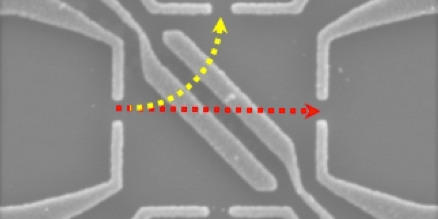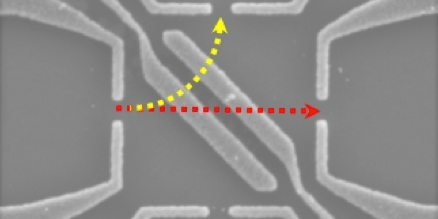Vector Potentials Rule
Richard Feynman, in his well-known physics lectures, concocted a thought experiment to illustrate one of the more surprising manifestations of quantum mechanics. He imagined a double-slit experiment in which electrons passed around a long, thin magnetic solenoid on their way to forming an interference pattern. When the solenoid is turned on, the phase of an electron’s wave function is changed, even though there is no magnetic field outside the coil, a phenomenon called the Aharonov-Bohm effect that has been experimentally confirmed many times. Now, Feynman’s original gedankenexperiment has been experimentally realized in modern form by Pradip Khatua of the Weizmann Institute, Israel, and colleagues. Using a device called a quantum point contact, they confirm Feynman’s vision but also show that such devices may be useful in spintronics.
Outside a solenoid, even though the magnetic field can be vanishingly small, the vector potential is nonzero. It is this vector potential that affects the phase of electrons in flight. To show this, Khatua et al. fabricated a microscopic diffraction instrument in which electrons pass through a tiny orifice, with and without a vector potential imposed by an external magnetic field.
The results, published in Physical Review Letters, show that as the vector potential is increased, the detected diffraction pattern shifts owing to the change in phase. And precisely as Feynman calculated, the phase change is equivalent to shifting the diffraction pattern by the Lorentz force acting on classical charged particles. Khatua et al. also point out that such structures could act as electron traffic controllers, manipulating spin-polarized electrons in spintronic devices. – David Voss





